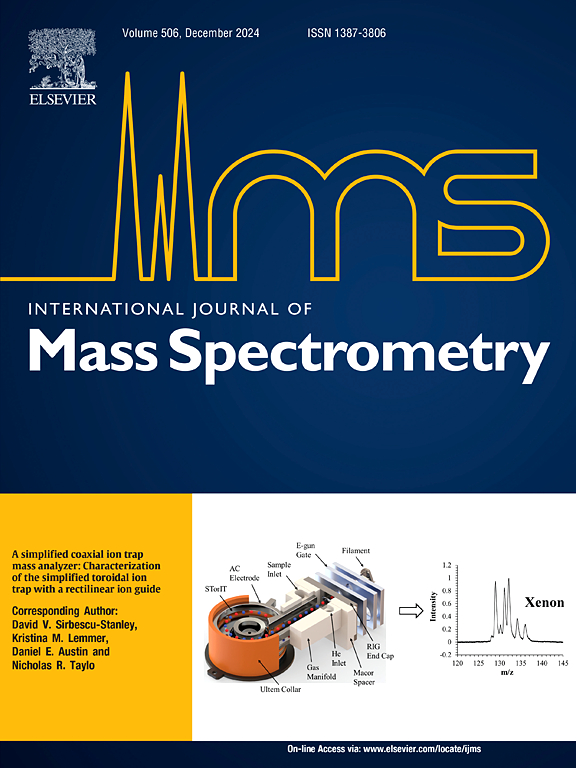Impact of glucagon oxidation on fibril formation
IF 1.7
3区 化学
Q3 PHYSICS, ATOMIC, MOLECULAR & CHEMICAL
引用次数: 0
Abstract
Glucagon structural dynamics is crucial for its function and pathology, yet its oligomerization and fibrillization mechanisms remain unclear. The early assembly of glucagon into fibrils is a critical process that can be perturbed by oxidation at key residues. In this study, we systematically tracked the oligomer formation of native glucagon up to the decamer level, revealing that glucagon undergoes oxidation at tryptophan and methionine—residues essential to its steric zipper structure. Our findings also indicate that oxidation exerts a dual effect on glucagon fibrillation. At low concentrations, oxidation partially unfolds glucagon's α-helix, facilitating hetero-oligomer formation between oxidized and native peptides, which promotes further oligomerization and unfolding. However, at high concentrations, oxidized glucagon fails to self-assemble into fibrils and appears more susceptible to degradation. Chromatographic analysis differentiates native and oxidized glucagon, highlighting increased polarity and multiple elution peaks indicative of diverse oxidative states, while mass spectrometry confirms site-specific modifications that influence structural transitions. These results emphasize the fine balance between oxidation and self-assembly, with implications for glucagon's therapeutic stability. An understanding of oxidation-induced aggregation dynamics is essential for developing stable glucagon formulations, underscoring the importance of controlling oxidative conditions to preserve their functionality and efficacy.

胰高血糖素氧化对纤维形成的影响
胰高血糖素的结构动力学对其功能和病理至关重要,但其寡聚化和纤化机制尚不清楚。胰高血糖素早期组装成原纤维是一个关键过程,可被关键残基的氧化所干扰。在这项研究中,我们系统地追踪了天然胰高血糖素低聚物的形成,直到十聚体水平,揭示了胰高血糖素在其立体拉链结构所必需的色氨酸和蛋氨酸残基处经历氧化。我们的发现也表明氧化对胰高血糖素纤颤有双重作用。在低浓度下,氧化作用使胰高血糖素的α-螺旋部分展开,促进氧化肽和天然肽之间形成异聚物,从而促进进一步的寡聚和展开。然而,在高浓度下,氧化的胰高血糖素不能自组装成原纤维,似乎更容易降解。色谱分析区分天然胰高血糖素和氧化胰高血糖素,强调极性增加和多个洗脱峰表明不同的氧化状态,而质谱分析证实了影响结构转变的位点特异性修饰。这些结果强调氧化和自组装之间的良好平衡,与胰高血糖素的治疗稳定性的含义。了解氧化诱导的聚集动力学对于开发稳定的胰高血糖素配方至关重要,强调控制氧化条件以保持其功能和功效的重要性。
本文章由计算机程序翻译,如有差异,请以英文原文为准。
求助全文
约1分钟内获得全文
求助全文
来源期刊
CiteScore
3.60
自引率
5.60%
发文量
145
审稿时长
71 days
期刊介绍:
The journal invites papers that advance the field of mass spectrometry by exploring fundamental aspects of ion processes using both the experimental and theoretical approaches, developing new instrumentation and experimental strategies for chemical analysis using mass spectrometry, developing new computational strategies for data interpretation and integration, reporting new applications of mass spectrometry and hyphenated techniques in biology, chemistry, geology, and physics.
Papers, in which standard mass spectrometry techniques are used for analysis will not be considered.
IJMS publishes full-length articles, short communications, reviews, and feature articles including young scientist features.

 求助内容:
求助内容: 应助结果提醒方式:
应助结果提醒方式:


